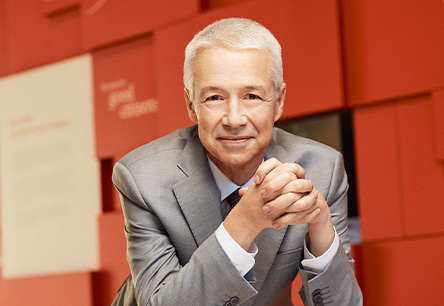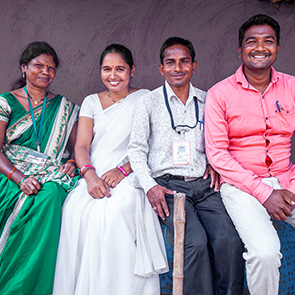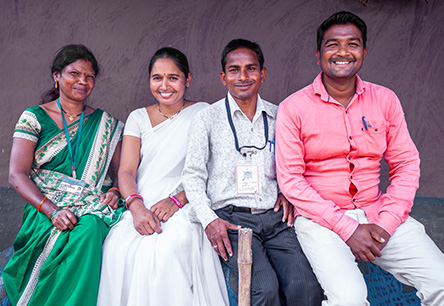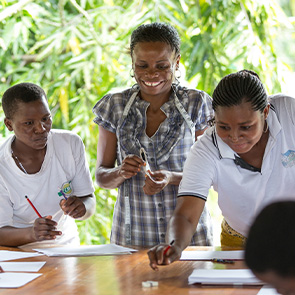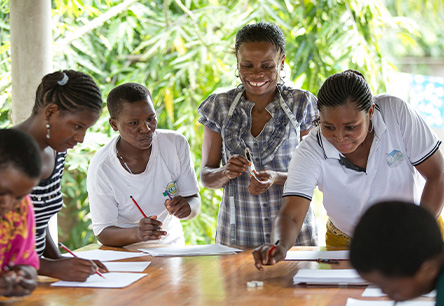Over the past three decades, Ebola outbreaks have become larger and more frequent. In the last decade alone, the two deadliest outbreaks on record in West Africa and the Democratic Republic of the Congo further underscored the urgent need for innovation to protect communities at risk.
Ebola is a significant and growing health threat that was recently ranked by the Africa Centres for Disease Control and Prevention among the pathogens with the highest-risk trajectory and epidemic potential. In 2022 alone, there were three outbreaks—one in Uganda was caused by the rarer Sudan ebolavirus, for which there is no approved vaccine or treatment. These outbreaks not only cause significant economic disruption, illness and loss of life, but they are particularly dangerous to healthcare workers and others working on the front lines.
The Zaire Ebola virus species has the highest mortality rate of 60% to 90%.41
At Johnson & Johnson, our vision is to protect people at risk of Ebola by preventing outbreaks before they can begin. We accelerated the development of our vaccine regimen in response to the 2014 outbreak in West Africa to help stop the spread in outbreak-adjacent areas. Today, Johnson & Johnson’s two-dose Ebola vaccine regimen comprising ZABDENO (Ad26.ZEBOV) and Bavarian Nordic’s MVABEA (MVA-BN-Filo) is indicated for active immunization of disease caused by the Ebola virus (Zaire ebolavirus species) in individuals ≥1 year of age. Building on the earlier approval from the European Commission and WHO Prequalification, our regimen received new regulatory Marketing Authorizations in Côte d’Ivoire and Ghana in 2022 and in Rwanda, Sierra Leone and Uganda in early 2023. These continued approvals are key to enabling access to our vaccine regimen for people and communities who live under the threat of Ebola.
Additionally, the WHO’s Strategic Advisory Group of Experts has recommended the proactive use of our Ebola vaccine regimen in non-outbreak settings to protect those most at risk, like healthcare workers and frontline workers. With this recommendation, countries have an additional tool to deploy in national pandemic prevention strategies and protect critical health and security infrastructure in countries living under the threat of this disease.
As of December 2022, more than 264,000 people worldwide had received a first dose of our Ebola vaccine regimen, including 242,000 who had been fully vaccinated.
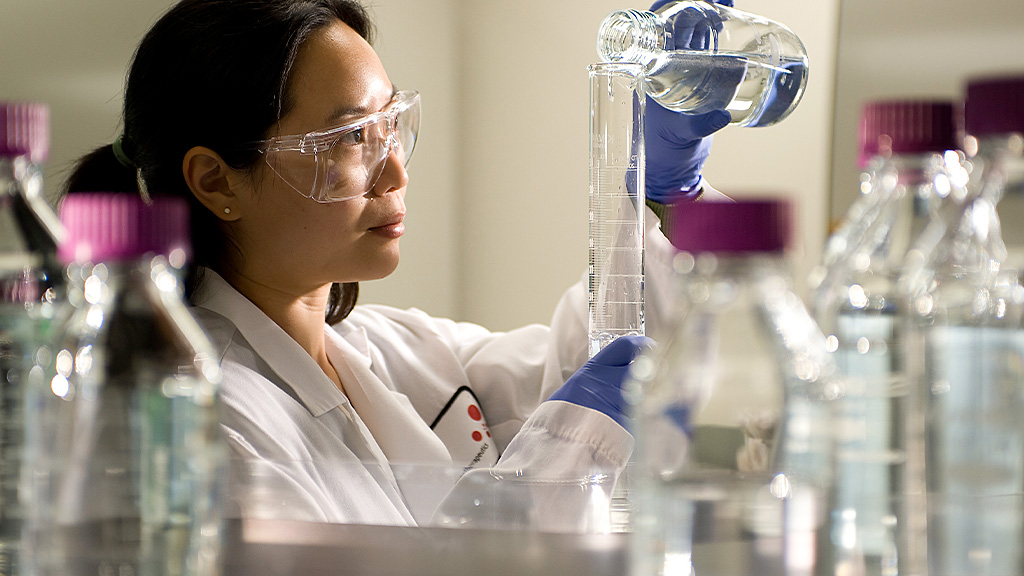
In 2022, additional data on the safety and immunogenicity of our Ebola vaccine regimen was published in The New England Journal of Medicine.42 The data was generated in the Phase 2 clinical trial of the Partnership for Research on Ebola VACcinations (PREVAC), which evaluated our Ebola vaccine regimen, among others, in 2,800 participants across trial sites in Guinea, Liberia, Mali and Sierra Leone. These results add to a growing body of scientific literature that demonstrate the Johnson & Johnson Ebola vaccine regimen has a favorable safety profile, is well tolerated and induces a robust immune response against the Zaire Ebola virus species in adults and children (aged 1 – 17 years).
Ruxandra Draghia-Akli, M.D., Ph.D.
Global Head, Global Public Health R&D, Janssen R&D
Recognizing African-led pandemic preparedness
In 2019, Johnson & Johnson supported the government of Rwanda and other partners to advance the Unprecedented Movement to drive a Unified Rwandan Initiative for National EBOLA Immunization (UMURINZI), a large-scale vaccination effort to prevent Ebola along the Rwandan border with the Democratic Republic of the Congo. We shared insights from UMURINZI at a symposium at the 2nd Annual International Conference on Public Health in Africa in Rwanda. The UMURINZI campaign vaccinated more than 203,000 people with our Ebola vaccine regimen and provides valuable experience that can be used to help prevent and respond quickly to the threat of a pandemic.
Our INGABO study, which was established as part of UMURINZI to evaluate the vaccine in healthy pregnant women, continued through 2022 with enrollment of 2,000 patients completed and 1,800 fully vaccinated by the end of the year. This is Johnson & Johnson’s first pregnancy vaccine trial. With positive results, it would offer the only Ebola prevention option for pregnant women as part of our vision to halt the spread of Ebola.
In May 2021, the Johnson & Johnson Ebola vaccine regimen was granted a temporary use authorization in the Democratic Republic of the Congo to support the planned prophylactic deployment of our vaccine regimen to help prevent future outbreaks. Johnson & Johnson is collaborating with the Ministry of Health, Hygiene and Prevention of the Democratic Republic of the Congo, acting through its National Institute for Biomedical Research, to launch a new Ebola prevention program in Mbandaka and other parts of Équateur province. The program, launched in early 2023, aims to strengthen local capacity with expanded capabilities to prevent Ebola outbreaks and respond more swiftly when outbreaks occur. Johnson & Johnson is donating 45,000 Ebola vaccine regimens and working closely to support capacity development.
41Kadanali A and Karagoz G, “An overview of Ebola virus disease,” North Clin Istanb., 2015 Apr 24;2(1):81-86, https://www.ncbi.nlm.nih.gov/pmc/articles/PMC5175058/.


